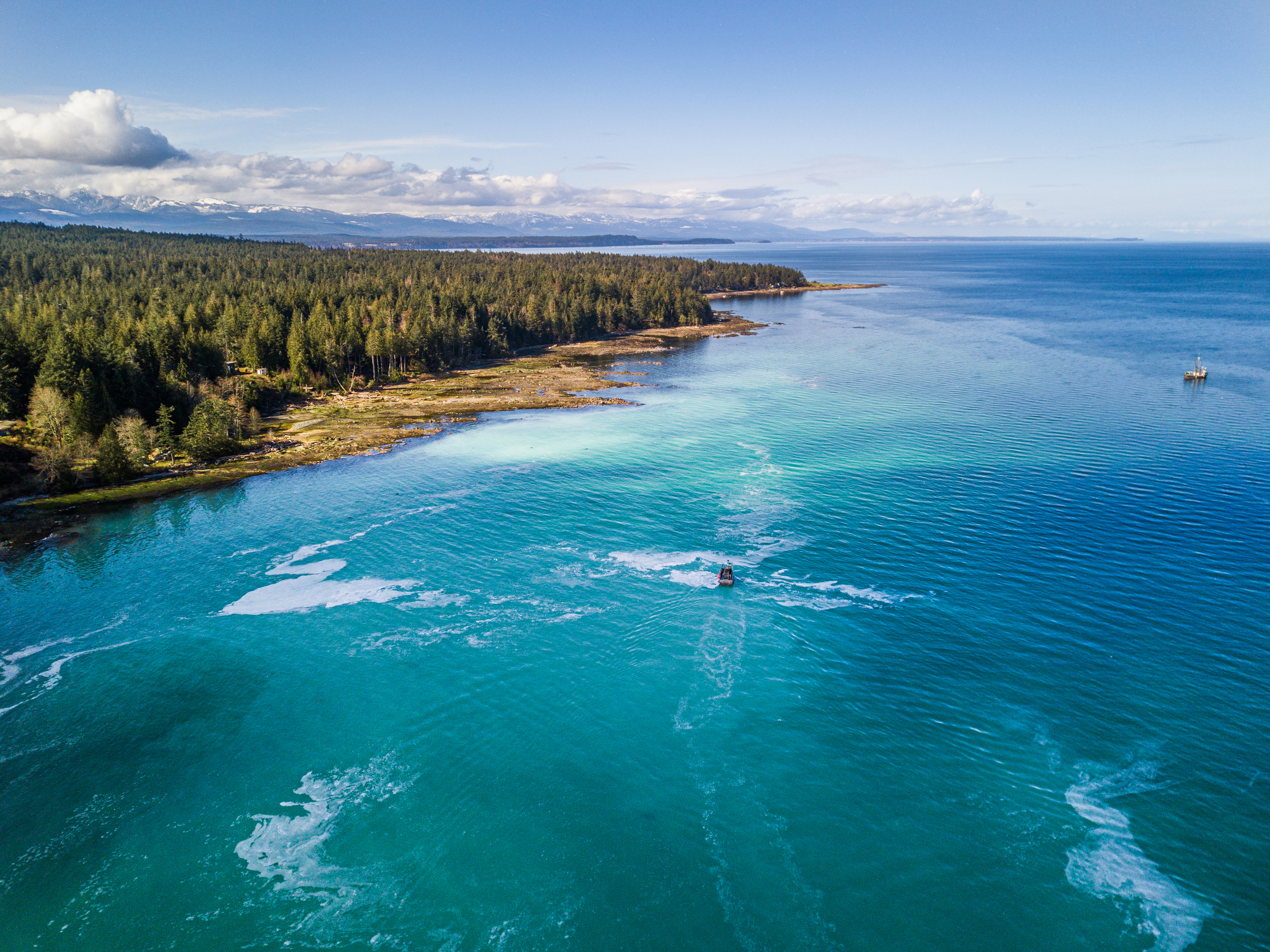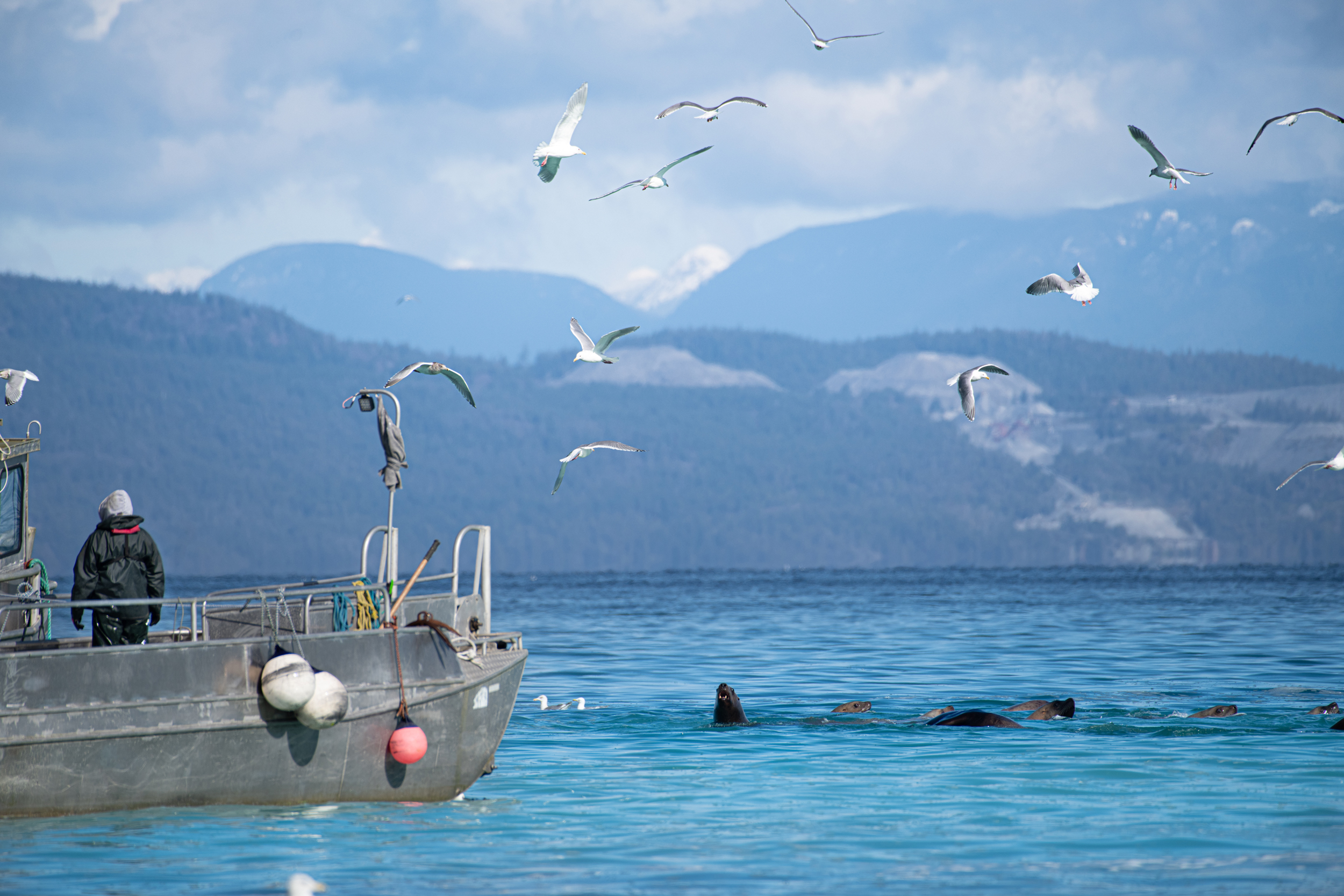A Spawn to Signify Spring
Salmon—Pinks, Coho, Chinook, Chum and Sockeye—have long held the spotlight across Vancouver Island, drawing visitors the world over and titling Campbell River as the "Salmon Capital of the World." But what about the seemingly humble Pacific herring? A cornerstone of our coastal ecosystems often overlooked; a feeder fish for all manner of other marine and coastal life from birds and larger fish to whales, wolves and bears; and an important signifier of spring.
Following the fish
The herring is historically the first fish to arrive each year. According to the 13 Moons of the Sliammon, Klahoose, and Homalco People calendar, a version of which was revitalized in 2005 by the Sliammon Treaty Society’s Research Department, both “Herring Spawning (Tet’e’ku Tla’gat)” and “Herring Roe (Xaw Xa’qwum)" can be found in March. In recent years, this has tended to occur in early March around our Island, but the start can vary by weeks up and down B.C.’s coast with locals keeping a watchful eye for the first signs of the returning fish. Once it begins, the spawn usually lasts anywhere from two weeks to a month, moving its way along the nearby coastline every few days.
The spawn marks the start of spring in many Indigenous traditions up and down the Pacific coastline, from modern-day Oregon to modern-day Alaska, and was the cause for members of many different Indigenous communities to migrate en masse to seasonal herring fishing camps. As the water turned dark and swirling from the droves of fish returning to their spawning grounds, the likes of the Nuu-chah-nulth, Homalco, Komoks and Kwakwaka’wakw Peoples traveled by canoe to their camps—a social event of sustenance. Some groups, such as the Nuu-chah-nulth, got to their camps as early as February to set up, ready for the moment the blue coastal inlets turned milky white from the male herring’s milt.
Featured in many traditional myths and songs, herring and its roe (eggs) were far more than simply food; they were important gifts between communities. Today, a deep respect continues to exist in small communities across the coast for this little fish. Every March, visitors gather at the Hornby Island Herring Festival with the hope of spotting the pearly white waters and accompanying abundance of marine life—and learning about the importance and processes of traditional Indigenous methods of herring harvesting from guest speakers. 
The taste of land and sea
Last year at the festival, Chief Councillor and Stewardship Director of the Kitasoo Xai'xais First Nation, Douglas Neasloss, shared that his community lowers different types of kelp into the water as the herring spawn approaches. The female herring lay their eggs on the kelp, which is brought out of the water after three or four days to be dried. Boats move through the territory slowly and quietly, minimizing engine noise and loud voices that could scare away herring, and avoiding areas where the spawn is still happening. Their focus is on the roe—the herring themselves are left to spawn another year to keep stocks healthy. Unlike salmon which only spawns once, herring can spawn up to ten times in their lifetime.
In some communities instead (or as well as kelp), boughs of Western Hemlock and Red cedar are lowered into the ocean waters in sturdy bundles close to shore with a float at the top and a weight at the bottom. The female herring lay their row on the boughs which, just like the kelp, are monitored over a few days and then hauled out to dry.
Roe is usually eaten raw or sun-dried—the balls popping with each bite, releasing a distinctive but subtle salty taste. The kelp it clings to, rather than being disposed of, is often eaten with the roe in one bite. Otherwise, it is either peeled off the boughs and kelp or even eaten with the hemlock by some groups. The latter has a unique taste that celebrates a food and gathering system which truly encompasses land and sea.
The future of herring
The not-so-humble herring has faced diminishing stocks over the last century due to methods of commercial fisheries, but these traditional, low-impact methods offer hope for the future of the fish. Last year’s spawning season saw an additional moment of optimism for herring stocks near Vancouver Island when news spread of another spawn further north at Port McNeill—where many locals shared that it was the first spawn there that they could remember.`
This year, keep an eye out for a pique in the abundance of sea life: seals, whales and circling birds are often the first, more easily seen, major identifiers of the increase in herring in our local waters. Then, watch for the evident change in water colour as the spawn begins, signaling the start of Spring.





